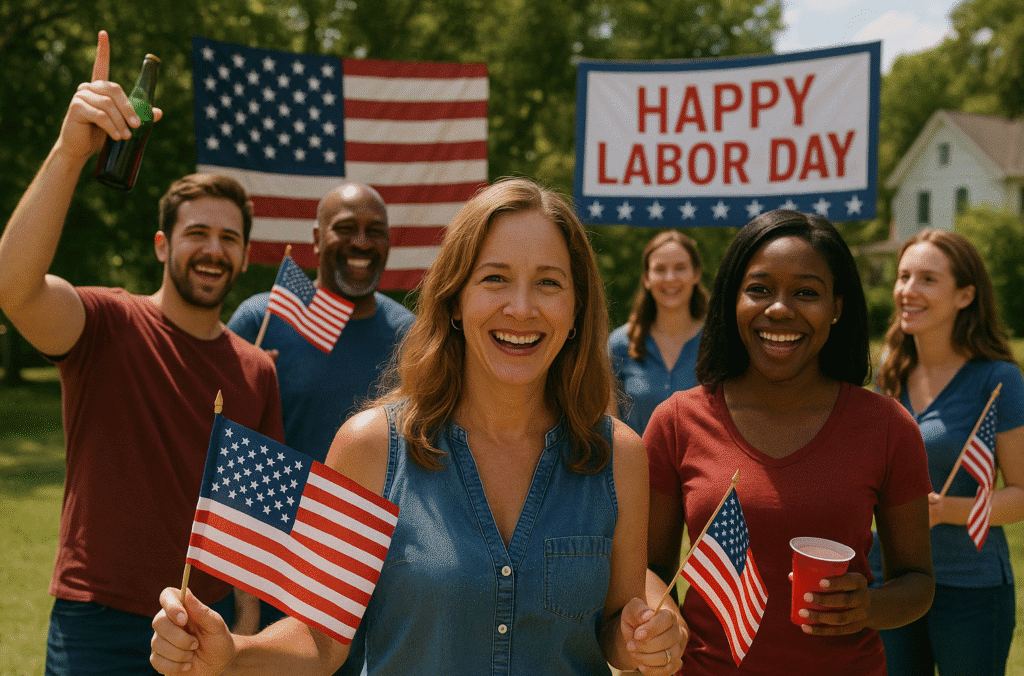Labor Day, observed on the first Monday of September, honors workers and the labor movement while also marking the symbolic end of summer in the United States.
Every year, on the first Monday of September, Americans observe Labor Day, a holiday dedicated to honoring the contributions of workers and the achievements of the labor movement. For many people today, it marks the symbolic end of summer, filled with barbecues, family gatherings, parades, and retail sales. Yet behind the long weekend lies a history of struggle, solidarity, and social change that shaped the American workplace.

The Origins of Labor Day
The roots of Labor Day go back to the late 19th century, during the height of the Industrial Revolution in the United States. Factories and railroads were booming, but working conditions were harsh. Employees—men, women, and even children—often worked 12-hour shifts, six days a week, in unsafe environments for meager pay.

The labor movement began organizing strikes, rallies, and unions to demand fairer treatment. One of the earliest recorded proposals for a workers’ holiday came from the Central Labor Union in New York City in 1882. On September 5 of that year, thousands of workers took unpaid leave and marched from City Hall to Union Square in what is considered the first Labor Day parade.
The idea spread rapidly across states and cities, with labor organizations advocating for an annual day to celebrate the dignity of work. By the 1890s, several states had already adopted the holiday. The turning point came after the Pullman Strike of 1894, a nationwide railroad protest that turned violent, leading to clashes between workers and federal troops. In an attempt to ease tensions and recognize the labor movement, President Grover Cleveland signed Labor Day into law as a federal holiday in 1894.
The Meaning Behind the Holiday

Labor Day was designed not just as a day off, but as a recognition of the central role workers play in building the nation. It symbolized respect for the people who powered the factories, laid the railroads, harvested crops, and contributed to the country’s growth.
Over time, Labor Day also became associated with broader social and economic reforms. It reminded Americans of the importance of workers’ rights, including safer workplaces, the eight-hour workday, and the weekend itself—all of which were won through persistent labor activism.
How Labor Day Is Celebrated
Although the historical roots are serious, the modern observance of Labor Day is largely festive. Across the United States, the long weekend is often viewed as the unofficial end of summer, and celebrations reflect that spirit.
- Parades: Many cities hold parades featuring union members, marching bands, and community organizations. These events highlight both the holiday’s origins and local pride.
- Barbecues and Picnics: Families and friends gather outdoors to enjoy one of the last warm weekends of the year. Cookouts, picnics, and neighborhood parties are staples of the holiday.
- Sports: Labor Day weekend is closely tied to American sports culture. College football season typically kicks off, and Major League Baseball enters its final stretch before the playoffs.
- Travel and Vacations: Millions of Americans take advantage of the three-day weekend to travel, whether for a final summer trip to the beach or a visit with relatives. Highways and airports are often crowded as a result.
- Retail Sales: Much like other U.S. holidays, Labor Day has become associated with shopping. Retailers offer major discounts on clothing, appliances, and cars, making it one of the biggest sales weekends of the year.
A Day of Reflection
While the holiday has become commercialized, labor organizations and community leaders often encourage people to remember its original purpose. Labor Day is not only about relaxation but also about honoring the contributions of millions of workers—past and present—who keep the country functioning.
The holiday also serves as a reminder of ongoing issues in the workplace: the need for fair wages, workplace safety, healthcare, and the balance between labor and technology in the modern economy. Just as workers in the 19th century fought for rights that are now taken for granted, today’s labor movement continues to address challenges such as automation, gig economy work, and wage inequality.
Festive and meaningful
Labor Day in the United States is both a festive occasion and a meaningful commemoration. From its beginnings in the struggles of industrial workers to its place as a national holiday celebrated with barbecues and parades, it represents the enduring value of work in American life. It honors the sweat and sacrifice of those who came before while reminding us that the rights and dignity of workers remain a cornerstone of a fair society.
Whether enjoyed as a day of rest, a family gathering, or a chance to reflect on social progress, Labor Day continues to embody the principle that every worker deserves recognition and respect.
